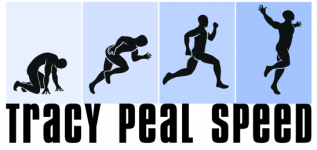STOP YOUTH SPORTS INJURIES: What Every Parent Needs To Know

You just bought a new Lexus. You decide to teach your kid how to drive. You both get into the car, with him or her behind the wheel. You pull out of the driveway, and then you instruct your child to “smash into the nearest wall!” Imagine how dumbfounded your teenager would be. But you explain, “Hey, since crashes could be a part of your driving experience, I think we better go out and teach you how to crash more effectively.” Obviously, this seems like a ludicrous idea and somewhat over-the-top. Why not just improve the driver’s skill behind the wheel and lessen the chance for collision, or even avoid the situation completely?
It has been well-documented that a surprising number of injuries that befall athletes are of the non-contact variety. Without the impetus of a strike or blow to the body, athletes are continually suffering a host of repetitive and overuse trauma. These injuries can be as subtle as musculoskeletal aches and pains, and as debilitating as ACL tears. With so many young athletes affected by this epidemic, the predicament of how to keep your child injury-free remains elusive to most people.
The problem is simple: athletes don’t move properly. They don’t sprint correctly, jog correctly, throw correctly, jump correctly, lift correctly, condition correctly nor change directions correctly. If they did, they wouldn’t get hurt.
A lot of well-intentioned coaches, therapists, physicians and researchers have attempted to combat this problem with a seemingly logical approach to rehabilitation and general preparedness. However, by reducing this issue into either isolated factors (“get stronger”, “stretch more”), specific culprits (the core, non-firing muscles), or research-supported protocol (foam rolling, dynamic warm-up), the actual reason why-kids-get-hurt has been misconstrued. Lost in the reductionist dogma so prevalent today, is that all movement is a consequence of interrelated actions. These actions, done poorly, and deeply rooted in athletes’ understanding of how to move themselves or an object from Point A to Point B, is the genesis of non-contacts sports injuries.
There has been conjecture, based on scientific data, that most significant injuries happen to athletes while they are decelerating; specifically, absorbing forces when landing from a jump or while changing directions rapidly i.e. cutting. A belief in this premise leads to the conclusion that learning to decelerate perfectly is the answer. Which is why the prevailing formula pushes towards the idea that the more we get accustomed to forceful impact, the more resilient our bodies will be. Unfortunately, consistent exposure to high velocity force, has a deleterious, not adaptive effect. This is akin to our “drivers learning how to crash better” example. Thinking that the body can be trained to overcome forceful tension and pressure is a mistake often conveyed from examination room to gym floor to playing field. Cars don’t survive crashes. Neither do we.
I see this far too frequently. We make athletes lift more, run harder and compete incessantly weekend after weekend believing that this is way to athletic prowess. And when they get nicked up, the advice is simple and straightforward: just rest up for a bit then repeat – with even more vigor. Because if that much didn’t stop the injury from happening, then that much more surely will. We are not designed to generate or consume heavy doses of external force. We are designed to attenuate and channel these forces to boost our speed, strength and performance. What matters most is our finesse and efficiency when interacting with our environment, not our muscular efforts. The objective is to redirect the accelerated, rotational forces of movement – not to try to stop or overcome them. Moving energy is a flow, not resistance and loading.
Most of my athletes never sustain these commonplace injuries. I don’t have clients waiting for surgery. If I do, it’s because they haven’t been compliant or followed protocol, or left the program too early. Athletes aren’t injured because of gender, genetics, bad luck, strength imbalances, inflexibility, fatigue or overuse. These are symptoms, not determinants. The keys are in your hands. Make better choices and drive well.


